1. The Ratio
- Books Name
- class 7 Mathematics Book
- Publication
- ReginaTagebücher
- Course
- CBSE Class 7
- Subject
- Mathmatics
Chapter -8
Comparing Quantities
The Ratio
Introduction to ratio
Ratios are used to compare quantities.
Symbol ':' is used to denote ratio.
• For a ratio, the two quantities must be in the same unit. If they are not, they should be expressed in the same unit before the ratio is taken.
Example: If there are four girls and seven boys in a class, then the ratio of number of girls to number of boys is 4:7.
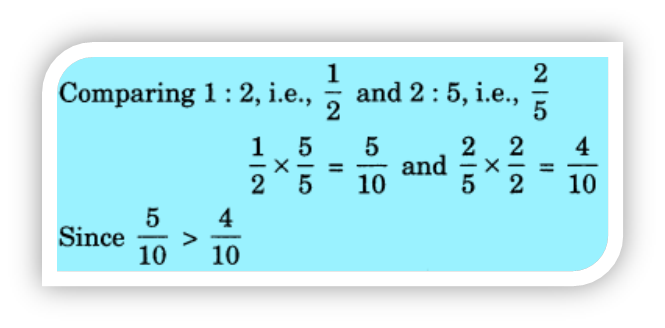
g. Cost of 6 pens is Rs 90. What would be the cost of 10 such pens?
Solution: Cost of 6 pens = Rs 90
Cost of 1 pen = 90 ÷ 6 = Rs 15
Hence, cost of 10 pens = 10 × 15 = Rs 150.
Application of ratios
Ratios have numerous applications in various fields on a daily basis.
- Used in finance - Current ratio, debt-equity ratio, etc.
- Used in chemistry to know the ratio of quantity of chemicals to be mixed in a chemical reaction.
- Used to solved mathematical problems involving - speed-distance-time, boat and stream problems,etc
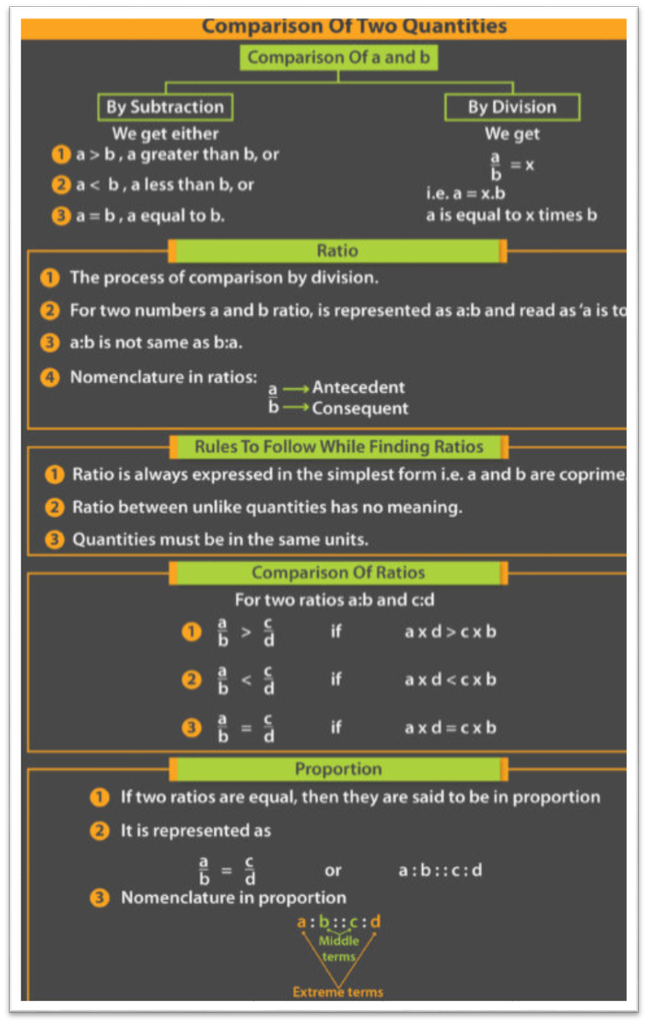
Equivalent ratios
- By multiplying numerator and denominator of a rational number by a non zero integer, we obtain another rational number equivalent to the given rational number. These are called equivalent ratio.
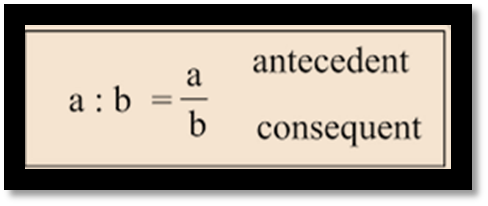
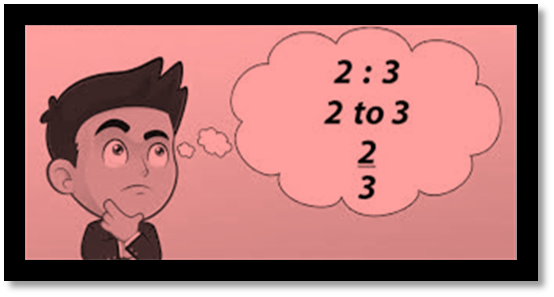
Example
![]()
And
Unitary method
Unitary method is the method of finding the value of one unit (unit rate) at first and then the value of required number of units
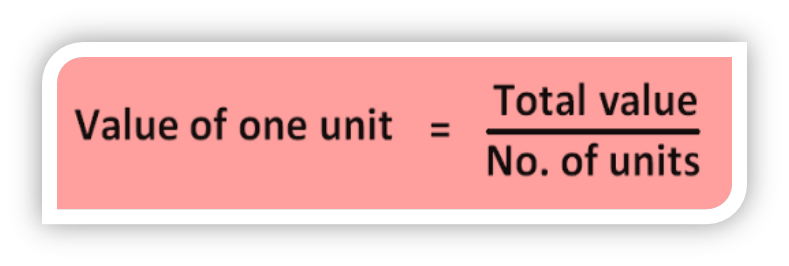
2. Percentage
- Books Name
- class 7 Mathematics Book
- Publication
- ReginaTagebücher
- Course
- CBSE Class 7
- Subject
- Mathmatics
Percentage
Introduction to percentage
Percentages are essentially fractions where the denominator is 100. To show that a number is a percent, we use the percent symbol (%) beside the number. For example, if you got 75 questions right out of 100 on a test (75/100), you would have scored 75%.
Conversion methods of percentage
Conversion of per cent into fraction
To convert a per cent into a fraction, divide it by 100 and remove the "%" sign.
![]()
Example:
(i) 37% = 37100
(ii) 22% = 22100
Note: Per cent is a fraction with a denominator of 100, and the numerator of this fraction is called Rate per cent.
2. Conversion of fraction into per cent
To convert any fraction to per cent, multiply it by 100 and put the per cent sign(%).

Example:
210=[210⋅100]% = 20%
Conversion of percentage into fraction
To convert the per cent into a ratio, change it to a fraction by dividing it by 100 and removing the per cent(%) sign. Finally, reduce the obtained fraction to the simplest form.
Conversion of ratio into per cent
We can convert the ratio into a percentage using the following method.
Example:
(i) a:b
=ab=[ab×100]%
Conversion of per cent into decimal
To convert the per cent to decimal, first change it to a fraction by dividing it by 1000 and remove the % sign. Then put the decimal point accordingly.
Conversion of decimal into a per cent
To convert decimal into a per cent, change it to fraction to remove decimal and then multiply it by 100 and put the % sign.
Theoretical explanation about finding a percentage
Finding a percentage of a given number:
To find the percentage of a given number, multiply the number by the require percent.
Let the number =x
Require percent =p%
Percentage of given number =p% of x
= p100 × x
Finding the original number from its percent:
Let original number =x
Require percent =p%
Obtained percentage =y
Now p% of x=y
p100×x =y
x= yp×100
![]()
Finding how much percent one quantity is of another quantity:
To find what percent of one quantity is of the other quantity if two quantities are given, we proceed as:

Percentage: Important points to remember
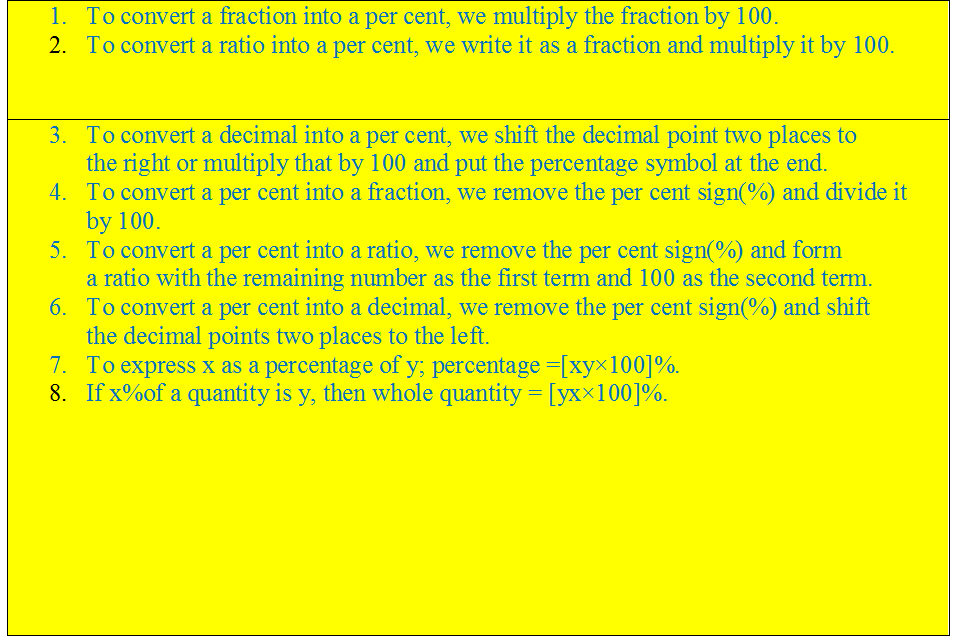
3. Percentage Application
- Books Name
- class 7 Mathematics Book
- Publication
- ReginaTagebücher
- Course
- CBSE Class 7
- Subject
- Mathmatics
Percentage Application
Percentage, Increase and decrease percentage
Percentage Increase
When comparing the increase in a quantity over a period of time, we first find the difference between the original value and the increased value. We then use this difference to find the relative increase against the original value and express it in terms of percentage. The formula for percentage increase is given by:
Percentage Decrease
When comparing the decrease in a quantity over a period of time, we first find the difference between the original value and the decreased value. We then use this difference to find the relative decrease against the original value and express it in the form of a percentage. The formula for percentage decrease is given by:
Percentage: Marks, Profit and loss- Introduction
Profit and Loss Basic Concepts
Let us learn profit and loss concepts in math. It is well explained in terms of cost price and selling price.
Profit(P)
The amount gained by selling a product with more than its cost price.
Loss(L)
The amount the seller incurs after selling the product less than its cost price is mentioned as a loss.
Cost Price (CP)
The amount paid for a product or commodity to purchase is called a cost price. Also, denoted as CP.
This cost price is further classified into two different categories:
Fixed Cost: The fixed cost is constant, it doesn’t vary under any circumstances
Variable Cost: It could vary depending as per the number of units and other factors
Selling Price (SP)
The amount for which the product is sold is called the Selling Price. It is usually denoted as SP. Also, sometimes called a sale price.
Profit and loss as a percentage
Marked Price Formula (MP)
This is basically labelled by shopkeepers to offer a discount to the customers in such a way that,

Formula for profit and loss percentage
Profit and Loss Formulas
Now let us find the profit formula and loss formula.
The profit or gain is equal to the selling price minus the cost price.
Loss is equal to cost price minus selling price.

The formula for the profit and loss percentage is:

Things you should know about discount
4. Simple interest
- Books Name
- class 7 Mathematics Book
- Publication
- ReginaTagebücher
- Course
- CBSE Class 7
- Subject
- Mathmatics
Simple interest
Introduction to interest
Interest is the amount of money that is paid for the use of borrowed money.
Let a person 'A' borrows some money from 'B' for a certain period of fixed time at a fixed rate, then 'A' will pay the borrowed money along with the additional money, which is called interest.
There are two types of interest:
Simple interest
Compound interest.
- Principal
- Amount
- Time
Principal (P):
The money borrowed or lend out for a certain period is called the "principal" or the "sum".
Amount (A):
The sum of the interest and principal is called the amount.
Amount (A)= Principal (P)+ Interest (I).
Time (n):
The duration of the period for which the money is borrowed is called the time.
Rate Interest per Annum (r):
If interest is payable yearly for every 100 rupees, then it is called rate per cent per annum.
Introduction to simple interest
Simple interest is a quick and easy method of calculating the interest charge on loan.
Simple interest is determined by multiplying the interest rate by the principal and by the number of days that elapse between payments.
This type of interest usually applies to automobile loans or short-term loans.
Derivation of the formula to calculate the Simple interest (I):
First, take P as the principal or sum and r% as a rate percent per annum. On every ₹100 borrowed, the interest paid is ₹r.
Therefore, on ₹P borrowed, the interest paid for one year would be =P×1×r100.
Then the interest period for two years =P×2×r100.
Then the interest period for three years =P×3× r100 and so on.
If the time period is 'n ' number of years, the formula will be I=P×n×r100.
Basic Formulae:
Amount (A) :
If the principal amount (P), and simple interest (I) are given, then we can find out the amount, by adding the principle and simple interest.

Simply rearranging both the formula as per requirement, we can find all the variants in the formula.
![]()
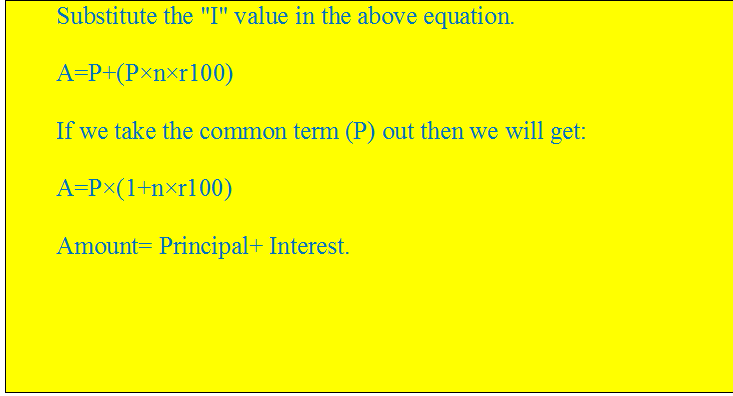
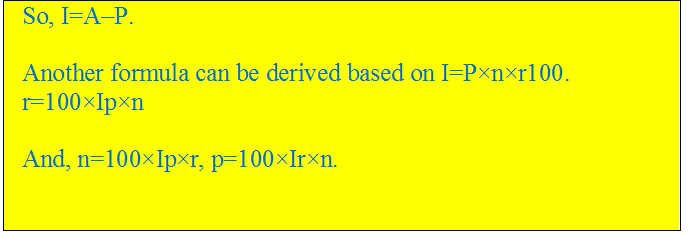

 Param Publication
Param Publication
 ReginaTagebücher
ReginaTagebücher
